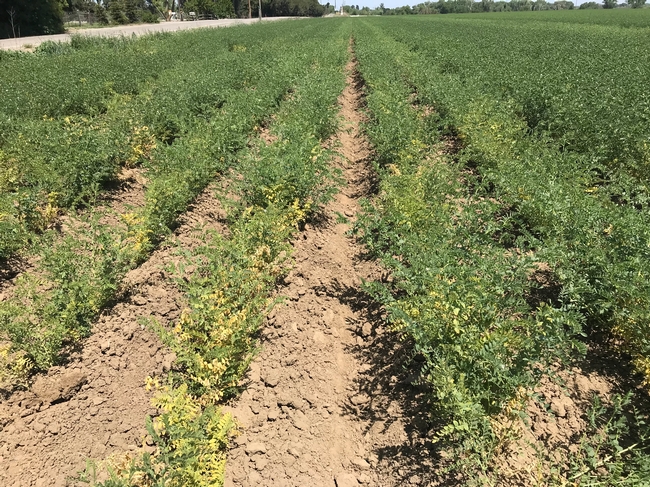This spring, we found a garbanzo bean field in the Sacramento Valley with fusarium root rot, identified by our new UCCE Plant Pathologist, Cassandra Swett at UC Davis. Fusarium root rot, caused by the fungus, Fusarium solani f. sp. ciceris, attacks the underground stems and roots of plants. Early infection is characterized by elongated reddish streaks on the roots. As the disease progresses, these eventually form reddish-brown lesions that will surround the entire root, causing decay. The above ground plant symptoms of affected plants include yellowing, wilting, stunting, and dieback. This Fusarium root rot is very specific to garbanzos and field peas (it will not go to other field crops). Plants are more susceptible to this disease when they are stressed, such as under drought or water logging conditions. We suspect that our recent relatively warm, dry winter stressed the garbanzo plants in the affected field, favoring disease development that healthy plants would normally grow out of. Use of seed treatments will help manage this disease along with long-term crop rotation. More information on diseases in dry beans can be found on the newly revised UC IPM guidelines for dry beans.
